The fascinating world of iridology offers a unique perspective on health assessment through the examination of iris patterns. Understanding an iridology chart and its symbols can provide insights into potential health conditions and bodily functions according to practitioners of this alternative medicine approach. This comprehensive guide explores the symbols, zones, and interpretations found in iridology charts to help you understand this intriguing diagnostic method.
What Is an Iridology Chart?


An iridology chart is a detailed map that divides the iris—the colored part of your eye—into zones that correspond to different organs and systems in the body. Practitioners of iridology use these charts as reference tools to analyze patterns, colors, and markings in the iris that may indicate health conditions or predispositions.
Iridology is based on the concept that the iris contains a wealth of information about our overall health. The iridology chart serves as the key to decoding this information, allowing practitioners to identify potential health concerns by examining specific areas of the iris.
A comprehensive iridology chart showing the correlation between iris zones and body systems
Discover Your Iris Health Indicators
Curious about what your iris might reveal? Learn how iridology practitioners interpret iris patterns for health insights.
Find an Iridology Practitioner
History and Basics of the Iridology Chart
The foundations of modern iridology trace back to the 19th century, though references to examining the eyes for health indicators date back thousands of years. The first systematic iridology chart was developed by Hungarian physician Ignaz von Peczely in the 1860s, who reportedly noticed changes in an owl’s iris after it suffered a broken leg.
The practice gained further development through the work of Swedish homeopath Nils Liljequist, who published an atlas of iris images in 1893, and later through German practitioner Pastor Emanuel Felke. In the United States, Bernard Jensen popularized iridology in the mid-20th century, refining the iridology chart into the detailed mapping system many practitioners use today.


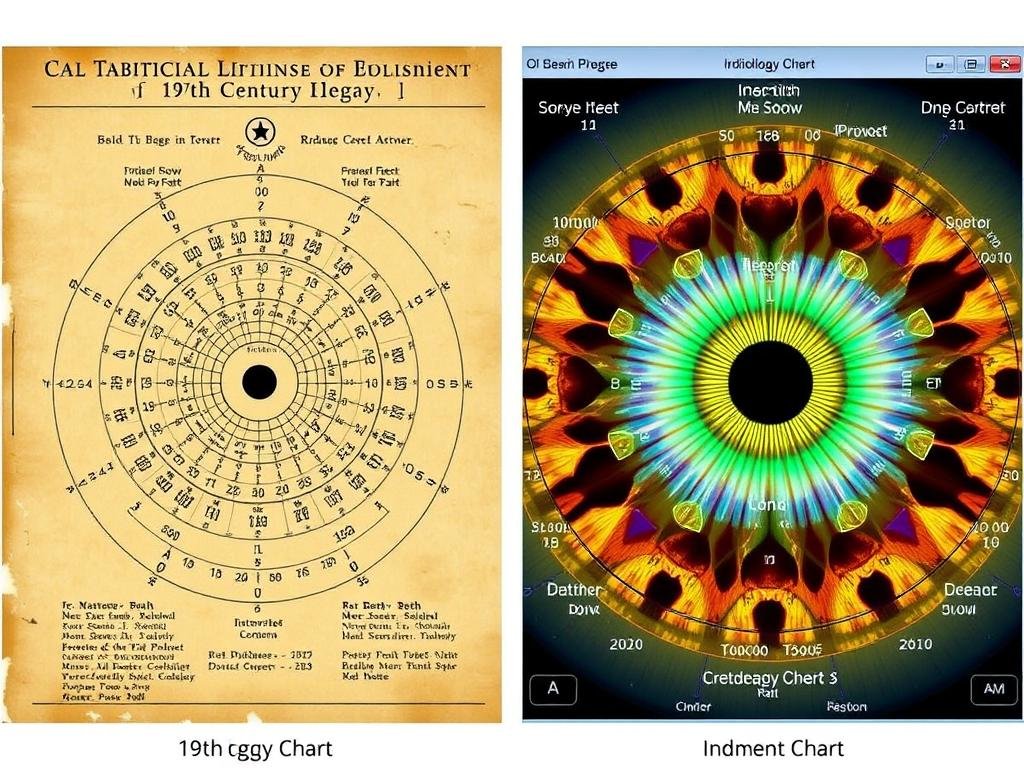
Evolution of the iridology chart from von Peczely’s original design to modern digital versions
The basic principle behind an iridology chart is that the iris connects to every organ and tissue in the body through the nervous system and other connections. The chart maps these relationships, dividing the iris into approximately 80-90 zones, with each zone corresponding to specific body parts or systems.
“The iris is connected to every organ and tissue of the body by way of the nervous system, and becomes a microsystem of the body’s condition.” – Bernard Jensen, pioneer of modern iridology
Understanding the Structure of an Iridology Chart
An iridology chart typically presents the iris as a clock face, with zones radiating outward from the pupil. The right and left irises correspond to different sides of the body, with some overlap in representation. Understanding this structure is essential for proper interpretation of iris signs.

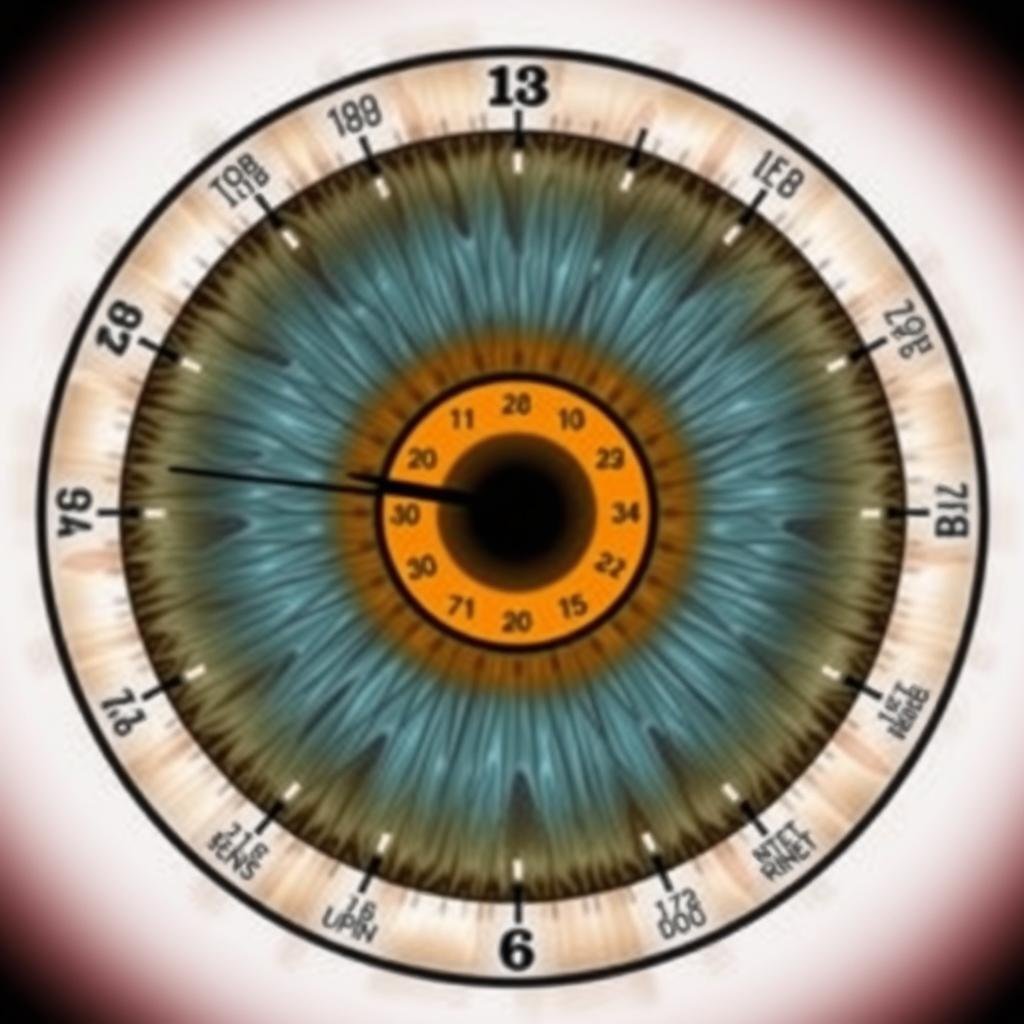
Clock-face division of the iris on an iridology chart with corresponding body systems
Key Zones in an Iridology Chart
The iridology chart divides the iris into specific zones that correspond to different parts of the body. While charts may vary slightly between different schools of iridology, most follow a similar pattern of organization:
Right Iris (Corresponds to Right Side of Body)
- Top Region (12 o’clock): Brain, head, and sinuses
- Upper Right (1-3 o’clock): Throat, thyroid, right lung, right breast
- Right Side (3 o’clock): Liver, gallbladder, right kidney
- Lower Right (4-6 o’clock): Appendix, ascending colon, right leg
- Bottom (6 o’clock): Reproductive organs, rectum
Left Iris (Corresponds to Left Side of Body)
- Top Region (12 o’clock): Brain, head, and sinuses
- Upper Left (9-11 o’clock): Heart, left lung, left breast
- Left Side (9 o’clock): Spleen, stomach, pancreas, left kidney
- Lower Left (6-8 o’clock): Descending colon, left leg
- Bottom (6 o’clock): Reproductive organs, rectum
Additionally, the iris is divided into concentric rings, with areas closer to the pupil representing organs deeper within the body, and outer rings corresponding to skin, muscles, and extremities.
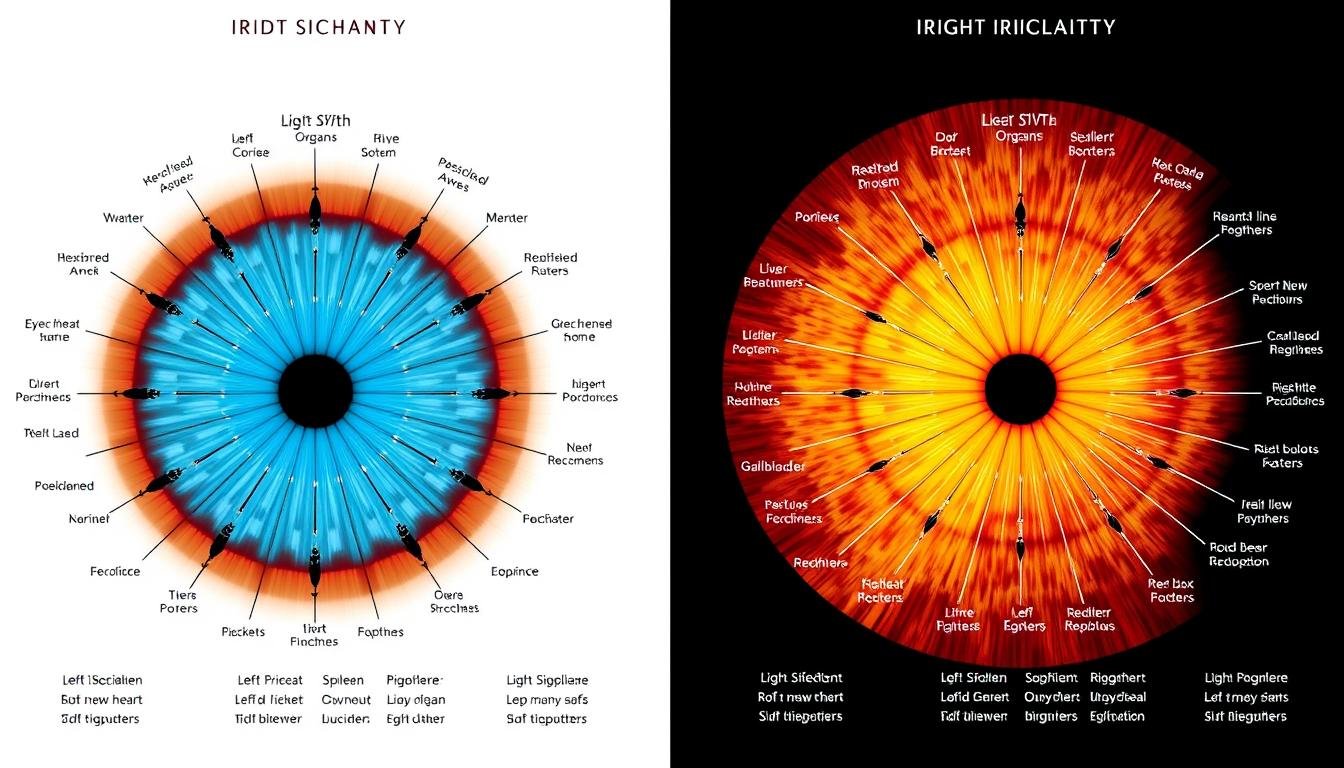
Comparison of left and right iris representations on an iridology chart
Common Iridology Chart Symbols and Interpretations
Iridologists analyze various markings, colors, and patterns in the iris and compare them to an iridology chart to make assessments about potential health conditions. These symbols are believed to indicate different states of tissue health, genetic predispositions, or active processes in the body.
Pigmentation Marks
Pigmentation variations in the iris are among the most common features analyzed using an iridology chart. These color changes may appear as spots, flecks, or patches in various colors:

Common pigmentation marks and their interpretations according to iridology chart analysis
- Brown or Dark Spots: May indicate toxin accumulation or areas of increased metabolic activity in the corresponding organ
- White or Light Spots: Often interpreted as inflammation or hyperactivity in the related body system
- Yellow Discolorations: May suggest kidney or liver stress when appearing in those zones
- Orange Spots: Sometimes associated with pancreatic or gallbladder concerns
Lacunae (Crypts)
Lacunae are openings or crypts in the iris fiber structure that appear as darker spots or depressions. On an iridology chart, these features are often interpreted as areas of potential weakness or underactivity:
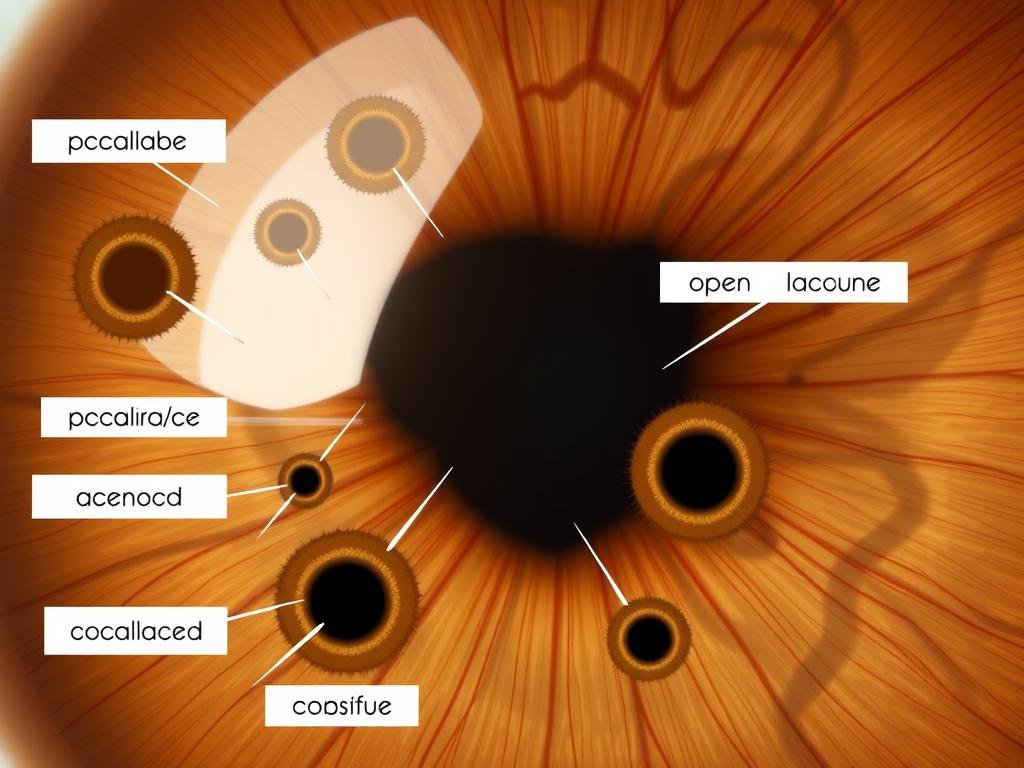
Lacunae (crypts) in the iris and their significance on an iridology chart
- Closed Lacunae: Completely enclosed dark areas that may indicate chronic conditions or genetic predispositions
- Open Lacunae: Partially enclosed areas that might suggest acute or developing conditions
- Honeycomb Lacunae: Multiple small lacunae clustered together, potentially indicating tissue damage
- Fish-Hook Lacunae: Curved lacunae that may suggest spasmodic conditions in the corresponding organ
Radii Solaris (Spokes)
Radii solaris appear as lines radiating from the pupil toward the outer edge of the iris. On an iridology chart, these lines are often interpreted as channels through which toxins may be eliminated:
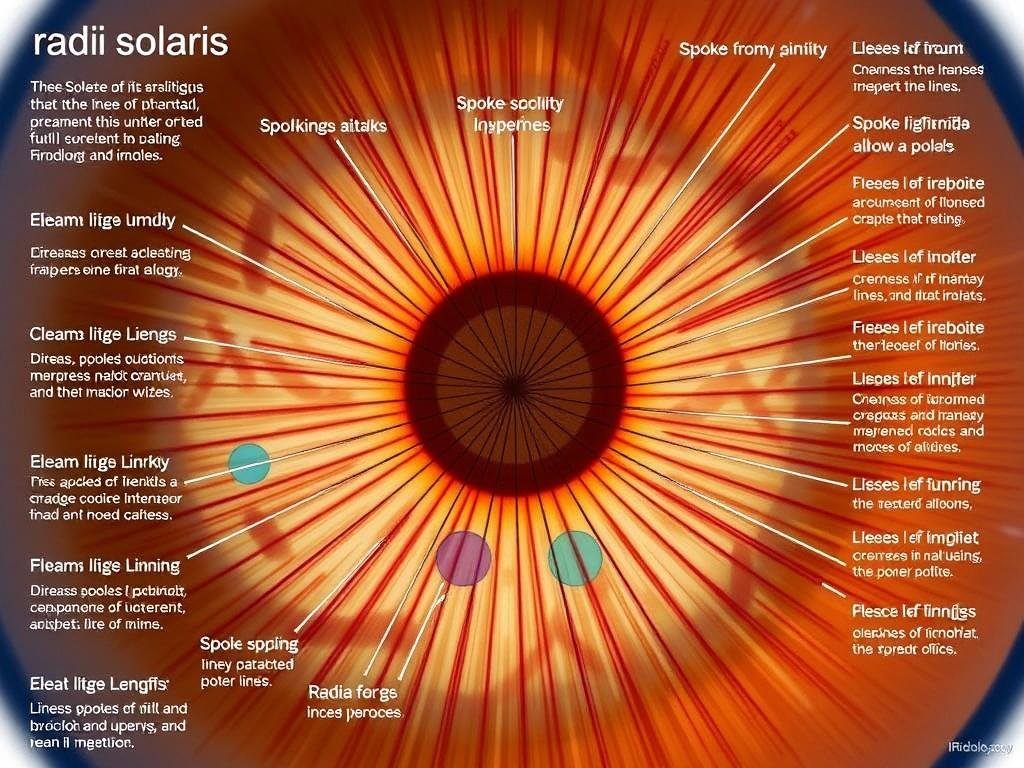
Radii solaris (spoke) patterns and their meaning in iridology chart analysis
- Single Radii: Individual lines that may indicate isolated stress in a specific organ
- Clustered Radii: Groups of lines suggesting more significant toxin elimination needs
- Deep Radii: Pronounced lines that might indicate chronic conditions
- Faint Radii: Subtle lines potentially showing improving conditions
Understand Your Unique Iris Patterns
Every iris is unique, just like a fingerprint. Discover what your iris patterns might reveal about your health predispositions.
Schedule an Iridology Consultation
How to Use an Iridology Chart
Using an iridology chart requires careful observation and systematic analysis. While professional iridologists undergo extensive training, understanding the basic approach can help you appreciate the complexity of this practice.
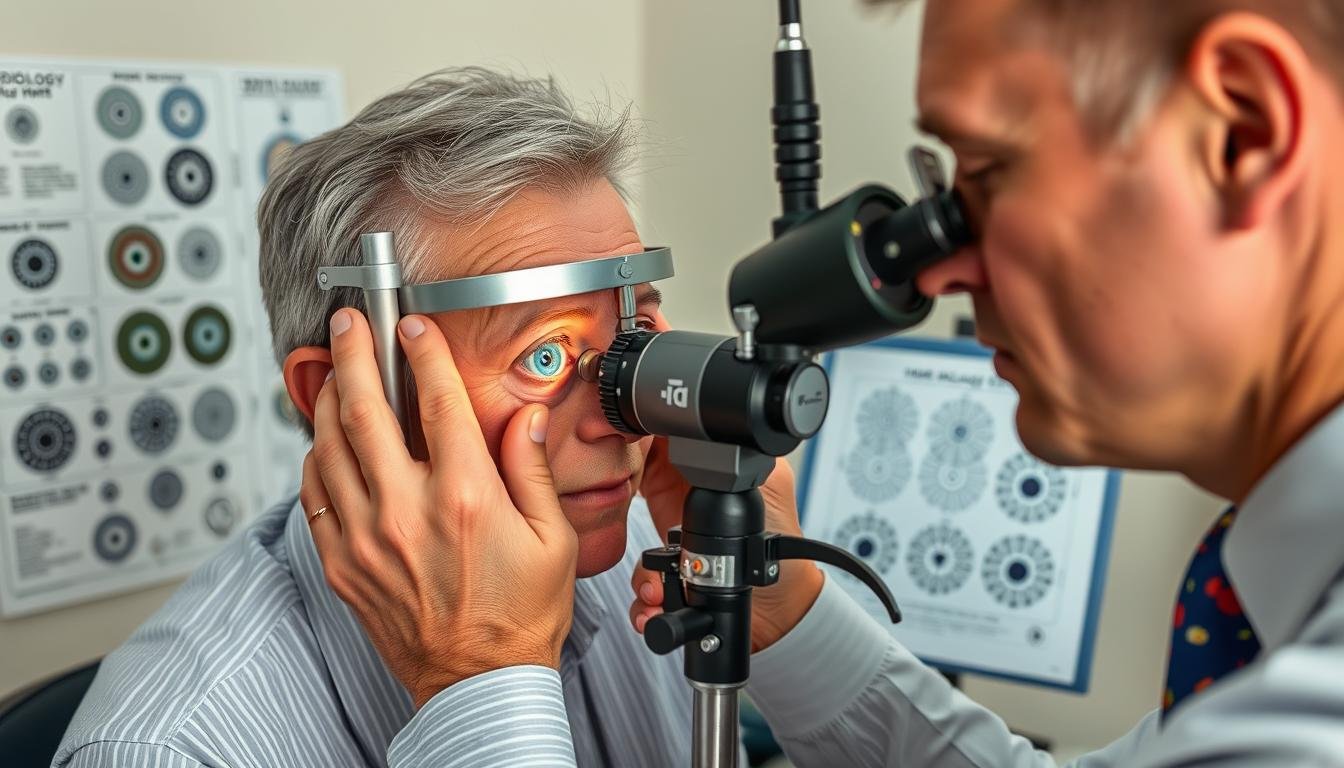
Professional iridology examination using specialized equipment and an iridology chart
Step-by-Step Iridology Analysis
- Proper Lighting and Equipment: Iridologists use specialized equipment such as magnifying glasses, flashlights, or slit-lamp microscopes to examine the iris in detail.
- Iris Photography: Many practitioners take high-resolution photographs of both irises for detailed analysis.
- Chart Comparison: The practitioner compares the observed iris features to an iridology chart to identify potential areas of concern.
- Zone Analysis: Each zone of the iris is systematically examined for markings, color changes, and structural features.
- Pattern Recognition: The practitioner identifies patterns that may indicate genetic predispositions, acute conditions, or chronic issues.
- Comprehensive Assessment: Findings from both irises are combined to create an overall health assessment.
Important Note: Iridology is considered a complementary assessment tool and should not replace conventional medical diagnosis. Always consult with qualified healthcare professionals for medical concerns.
Limitations and Considerations
While many alternative health practitioners value the insights provided by iridology charts, it’s important to understand the limitations of this approach:
- Iridology cannot diagnose specific diseases but may indicate areas of potential weakness or stress
- Iris patterns are largely stable throughout life, with minimal changes occurring after early childhood
- Individual interpretation may vary between practitioners
- Scientific studies have not consistently validated iridology’s diagnostic claims
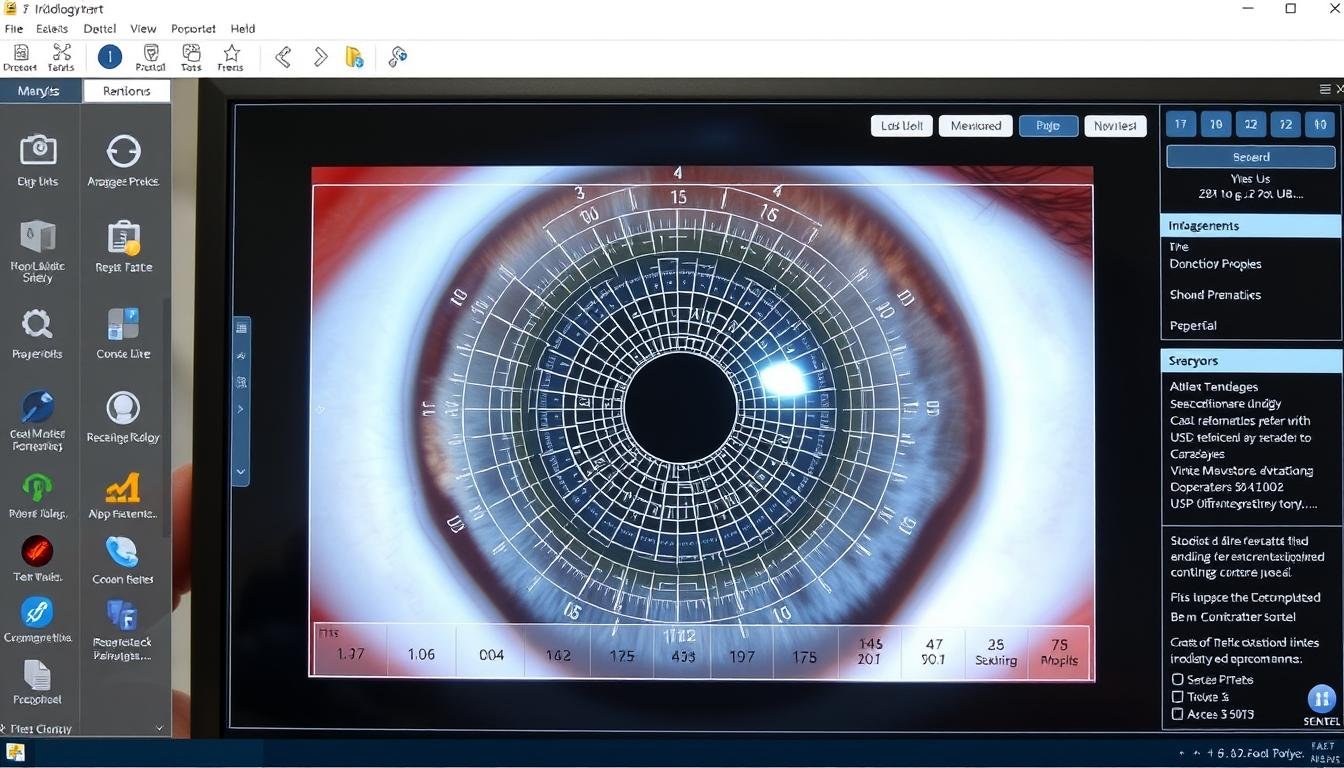
Modern digital iridology software analyzing iris patterns with iridology chart overlay
Scientific Perspective on the Iridology Chart
The scientific community has extensively studied iridology and the validity of iridology charts as diagnostic tools. Understanding both the scientific perspective and alternative medicine viewpoints provides a balanced view of this practice.
Alternative Medicine Perspective
- Provides a non-invasive assessment tool
- May offer early indications of potential health concerns
- Considers the body as an interconnected system
- Can complement other holistic health approaches
- Has a long history of use in various traditional medicine systems
Scientific Medicine Perspective
- Lacks consistent scientific validation in controlled studies
- Iris patterns remain largely stable throughout life
- No proven physiological mechanism for organ-iris connections
- Controlled trials have not shown diagnostic accuracy beyond chance
- May delay proper medical treatment if relied upon exclusively
Several scientific studies have examined the efficacy of iridology. A notable study published in the Journal of the American Medical Association in 1979 tested three iridologists who examined photographs of irises from 143 patients, 48 of whom had kidney disease. The iridologists were unable to identify which patients had kidney disease at a rate better than chance.
Similarly, a study published in the British Medical Journal tested iridologists’ ability to detect gallbladder disease and found no statistical significance in their diagnostic accuracy. These and other studies have led mainstream medicine to classify iridology as a pseudoscientific practice.

Comparison of iridology chart analysis versus conventional medical diagnostics
“While iridology has passionate advocates, the stability of iris structures throughout life and the lack of proven physiological mechanisms for organ-iris connections remain significant scientific challenges to its validity as a diagnostic method.”
Final Thoughts on the Iridology Chart
The iridology chart represents a fascinating intersection of traditional observation and alternative health assessment. While scientific evidence does not currently support many of the diagnostic claims made by iridology practitioners, the practice continues to be valued by many in the holistic health community as a complementary assessment tool.
For those interested in exploring iridology, it’s important to approach it with an informed perspective—understanding both its historical significance and its limitations. The intricate patterns of the iris are undeniably fascinating, and the systematic mapping provided by iridology charts offers an organized approach to interpreting these patterns.
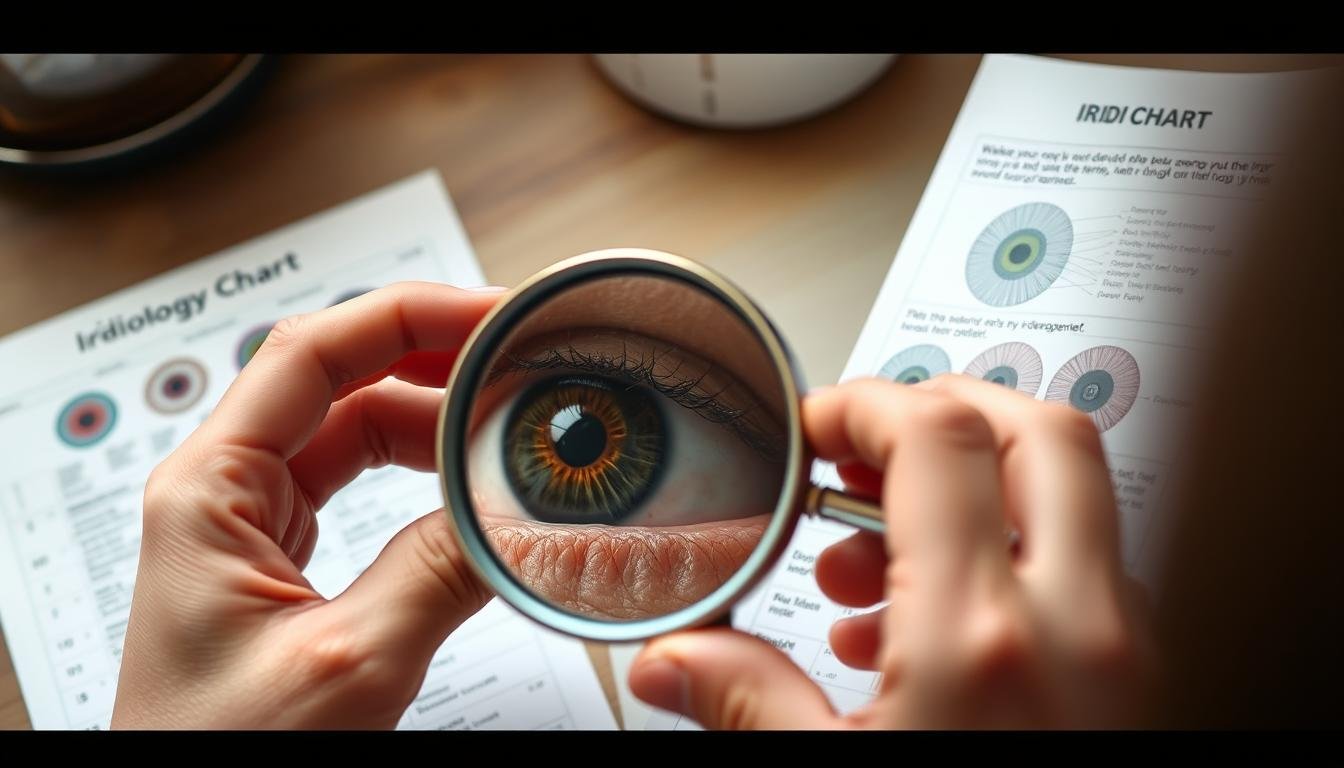
Self-exploration using an iridology chart as a reference guide
Whether you view the iridology chart as a valuable health assessment tool or simply as an interesting historical artifact of alternative medicine, the study of iris patterns reminds us of humanity’s enduring quest to understand the body’s complex systems and signals.
Explore Iridology Further
Interested in learning more about what your iris might reveal? Connect with a qualified iridology practitioner for a personalized consultation.
Find an Iridology Specialist Near You
Disclaimer: This article is for informational purposes only and does not constitute medical advice. Iridology should be considered a complementary approach and not a replacement for conventional medical care. Always consult with qualified healthcare professionals for medical concerns and proper diagnosis.




























